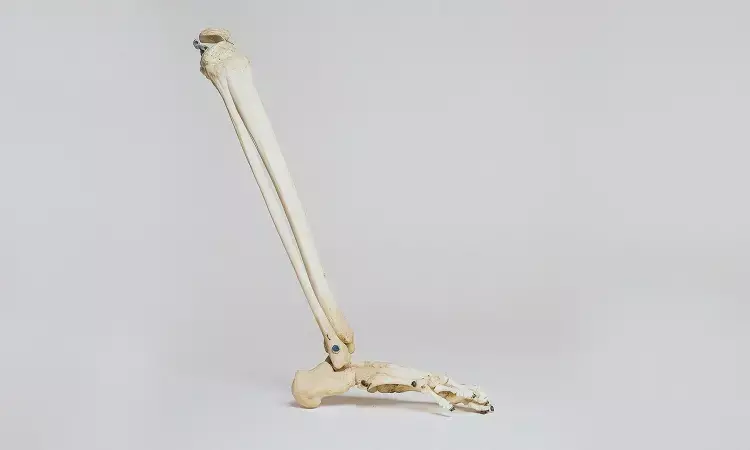- Home
- Medical news & Guidelines
- Anesthesiology
- Cardiology and CTVS
- Critical Care
- Dentistry
- Dermatology
- Diabetes and Endocrinology
- ENT
- Gastroenterology
- Medicine
- Nephrology
- Neurology
- Obstretics-Gynaecology
- Oncology
- Ophthalmology
- Orthopaedics
- Pediatrics-Neonatology
- Psychiatry
- Pulmonology
- Radiology
- Surgery
- Urology
- Laboratory Medicine
- Diet
- Nursing
- Paramedical
- Physiotherapy
- Health news
- Fact Check
- Bone Health Fact Check
- Brain Health Fact Check
- Cancer Related Fact Check
- Child Care Fact Check
- Dental and oral health fact check
- Diabetes and metabolic health fact check
- Diet and Nutrition Fact Check
- Eye and ENT Care Fact Check
- Fitness fact check
- Gut health fact check
- Heart health fact check
- Kidney health fact check
- Medical education fact check
- Men's health fact check
- Respiratory fact check
- Skin and hair care fact check
- Vaccine and Immunization fact check
- Women's health fact check
- AYUSH
- State News
- Andaman and Nicobar Islands
- Andhra Pradesh
- Arunachal Pradesh
- Assam
- Bihar
- Chandigarh
- Chattisgarh
- Dadra and Nagar Haveli
- Daman and Diu
- Delhi
- Goa
- Gujarat
- Haryana
- Himachal Pradesh
- Jammu & Kashmir
- Jharkhand
- Karnataka
- Kerala
- Ladakh
- Lakshadweep
- Madhya Pradesh
- Maharashtra
- Manipur
- Meghalaya
- Mizoram
- Nagaland
- Odisha
- Puducherry
- Punjab
- Rajasthan
- Sikkim
- Tamil Nadu
- Telangana
- Tripura
- Uttar Pradesh
- Uttrakhand
- West Bengal
- Medical Education
- Industry
Bone density is associated with regular use, study finds

Bone mineral density (BMD) and frame size are important predictors of future bone health, with smaller frame size and lower BMD associated with higher risk of later fragility fractures.
Researchers at the University of Illinois Urbana-Champaign have studied a population of women in rural Poland for the past four years to understand how their lifestyle affects their bone density. The age group and lifestyle of these women are often overlooked in such studies.
The study "Bone density and frame size in adult women: effects of body size, habitual use, and life history" was published in the American Journal of Human Biology.
"My work focuses on understanding how our activities shape our skeleton and what it means for the modern population," said Katharine Lee, a recent graduate of the Clancy group, which is affiliated with the Beckman Institute for Advanced Science and Technology.
The study focused on a population of farmers whose lifestyles involve substantial farm and domestic labor, such as growing fruits and vegetables, churning butter, beating rugs, washing windows, and caring for children. "We made some basic body measurements and looked at the physical activity patterns of these women," Lee said. "We also used a bone sonometer, which was provided through Beckman's Biomedical Imaging Center. It is a portable device that can be conveniently used to carry out bone density measurements."
Previous studies in the field have looked at bone density measurements in menopausal women. The researchers wanted to focus on women between the ages of 18 and 46, an age group that is not often looked at in bone density studies. "We wondered why there was so little research on premenopausal women, since presumably their bone density and activity predicts postmenopausal osteoporosis," said Kathryn Clancy, an associate professor of anthropology at Illinois and a part-time Beckman faculty member.
"We saw that measures such as grip strength and lean mass are associated with the bone density and frame size of these premenopausal women. We also saw that the bone density of the radius, which is the bone at the base of your thumb, is very high compared to an average white woman of European descent," Lee said. "Interestingly, we don't see this increased bone density in Polish American women. We don't fully understand what factors are causing it."
The researchers believe that this study sheds light on the specific contexts of this lifestyle. "A lot of these measures have looked at large populations and averaged, so they have missed many of these details," Lee said. "It is also important to think about which populations are not represented in the literature and look at lifestyles that are different to the modern, sedentary lifestyle that most people in the U.S. have."
Moving forward, the researchers are interested in understanding whether the childhood environment has helped shape the bone health of the women. "We have interviewed them about the different types of work they did when they were growing up. We asked whether they grew up on a farm, whether they had farm animals, or whether they tended a garden. Those activities, rather than the ones they are doing now, might be associated with the bone health measures," Lee said.
Hina Zahid Joined Medical Dialogue in 2017 with a passion to work as a Reporter. She coordinates with various national and international journals and association and covers all the stories related to Medical guidelines, Medical Journals, rare medical surgeries as well as all the updates in the medical field. Email: editorial@medicaldialogues.in. Contact no. 011-43720751
Dr Kamal Kant Kohli-MBBS, DTCD- a chest specialist with more than 30 years of practice and a flair for writing clinical articles, Dr Kamal Kant Kohli joined Medical Dialogues as a Chief Editor of Medical News. Besides writing articles, as an editor, he proofreads and verifies all the medical content published on Medical Dialogues including those coming from journals, studies,medical conferences,guidelines etc. Email: drkohli@medicaldialogues.in. Contact no. 011-43720751


